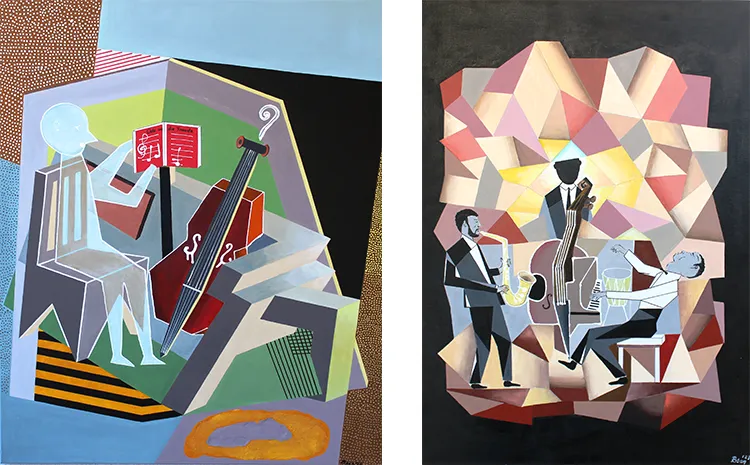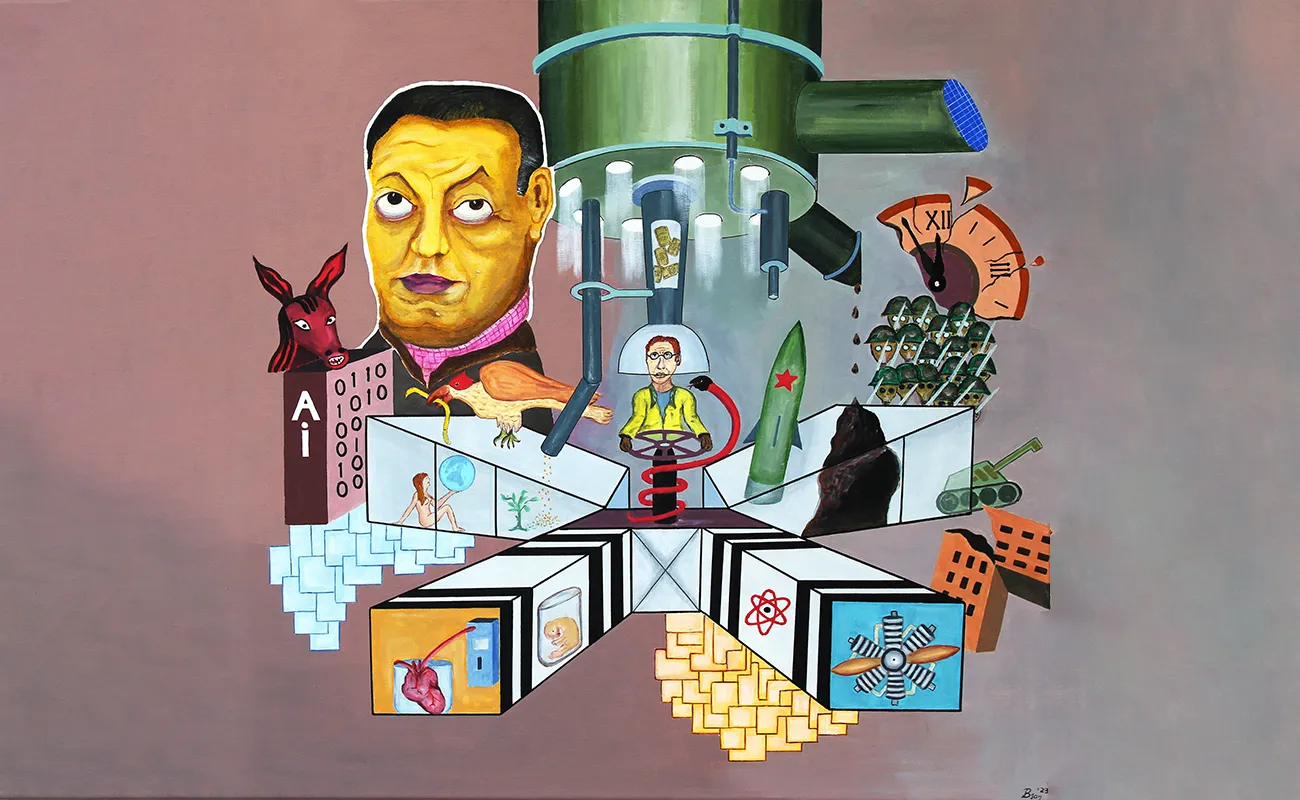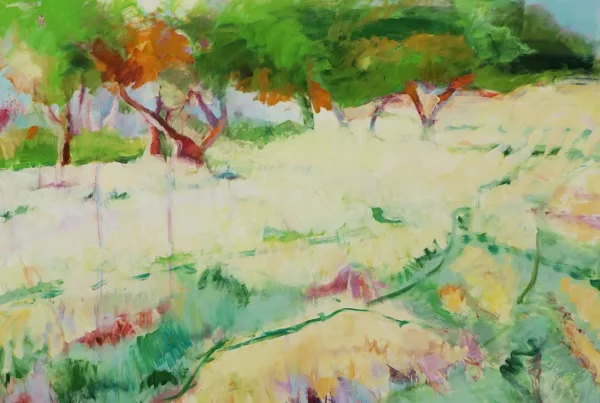“Each of my new artworks is an experiment.”
Alex Bonsanthy: A Hybrid Origin in Art and Science
Alex Bonsanthy‘s journey into the arts is as multifaceted as the cubist paintings he creates. Born with a penchant for the precise and the innovative, he embarked on an academic path far removed from the typical artist’s beginnings. Initially, Bonsanthy pursued an intense curriculum in medical cybernetics and electronic engineering at the University of Bucharest, Romania. This technical foundation laid a unique groundwork that would later deeply influence his artistic style. His academic prowess didn’t stop there; he completed his educational journey with a Ph.D. at the University of Bremen, Germany, further cementing his analytical skills.
In a parallel pursuit of artistic knowledge, Bonsanthy enriched his understanding of art at the private Art School named Rembrandt in Bucharest. He dove into self-directed studies of iconic artists like Van Gogh and Picasso, meticulously copying their works to grasp the nuances of color composition and line harmony. Through these endeavors, Bonsanthy not only honed his technical skills but also developed a profound connection with his artistic forebears, considering himself a “late disciple of Van Gogh and an unofficial bastard of Picasso.” This blend of rigorous scientific training and passionate artistic study formed the bedrock of what would become his signature style.

Defining a New Vision: The Birth of Geometric Cubism
The seeds of Bonsanthy’s unique artistic philosophy were sown from the synthesis of his rigorous scientific education and his deep-seated appreciation for the cubist innovations of Braque and Picasso. This confluence gave rise to his own distinctive style, which he aptly named Geometric Cubism. Unlike traditional cubism, Bonsanthy’s approach emphasizes a more pronounced geometric structure, aligning with the linear and structural elements prevalent in the modern world. His canvases are a dance of bold colors and harmonious lines, where each stroke and shade echoes a dialogue between human-made forms and the organic essence of nature.
Geometric Cubism, as developed by Bonsanthy, isn’t merely an aesthetic choice but a philosophical stance on the balance and tension between man-made and natural environments. His artworks are crafted narratives, communicating themes of equilibrium and dissonance, where human creativity intersects with natural law. The vivid colors and deliberate structures in his paintings reflect this ongoing interaction, aiming to symbolize the potential harmony between humanity and nature. By adopting this innovative style, Bonsanthy invites viewers into a contemplative space, urging them to reconsider the relationships and boundaries we construct in our environments.
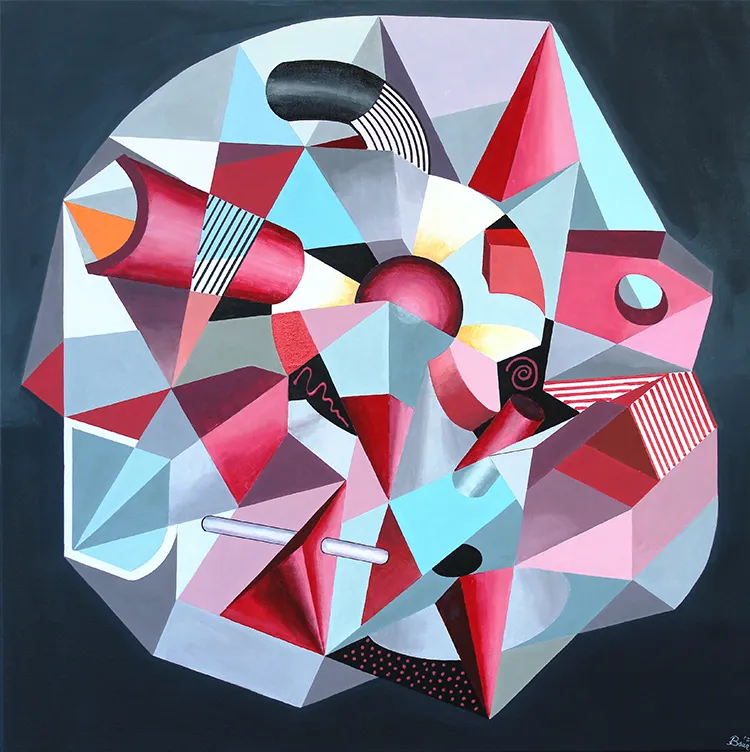
Alex Bonsanthy: An International Canvas
Alex Bonsanthy’s artistic endeavors have not gone unnoticed on the global stage. His works have been showcased in a plethora of prestigious exhibitions and international contests, solidifying his reputation within the international art community. His participation in these events has often seen him reach finalist status, and he has clinched top honors, such as the first prize at the 59th International Artavita Online Contest. These accolades not only underscore Bonsanthy’s skill and innovative vision but also his resonance with a global audience, which appreciates the depth and message of his art.
The scope of Bonsanthy’s exhibitions spans several significant venues, from the London Art Biennale, where he was one of the selected artists among hundreds from around the world, to solo exhibitions that deeply reflect his individual journey and artistic narrative. His solo exhibitions, like the “Die Raben von Rabestein” at Rabestein Castle in Bavaria and “Ärmonia Culorilor” in EM Art Gallery, Deva, Romania, have provided intimate spaces for viewers to engage directly with his works. Moreover, his digital presence in exhibitions like the Red Dot Miami and upcoming events at the LA Art Show and Artexpo New York indicates his adaptability and the versatile appeal of his artworks in both physical and virtual realms.
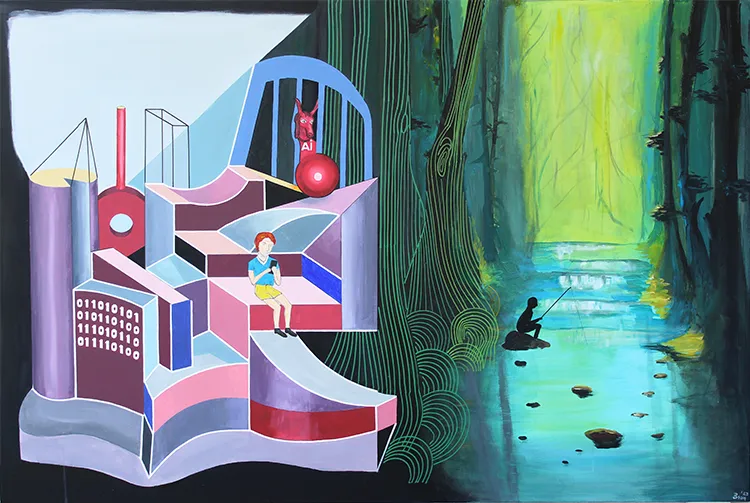
The Philosophical Artist: Exploring Deep Artistic Influences
The philosophical depth of Alex Bonsanthy’s art is significantly shaped by his admiration and critical study of pioneers like Van Gogh and Picasso. From Van Gogh, he inherited a bold use of color that captures emotional and natural veracities. Picasso’s legacy in Bonsanthy’s work is evident in his foundational cubist forms which he evolved into a more geometrically oriented style. This evolution was not merely an artistic choice but a philosophical statement, reflecting Bonsanthy’s contemplation on the modern world characterized by digital dominance and engineered environments.
One of Bonsanthy’s most impactful pieces, “Artificial vs Natural,” encapsulates his critical view of modern society. This artwork, which garnered the first prize at an international contest, starkly contrasts the relentless pace of the digital age against the timeless rhythms of natural existence. It’s a visual exploration of the growing discord between man-made artificiality and the organic essence of human life, underscoring a potential cultural and spiritual regression. This piece is a poignant reminder of the potential perils that lie in overly embracing technological advancement at the expense of natural human development, showcasing Bonsanthy’s ability to weave social commentary into his art.
